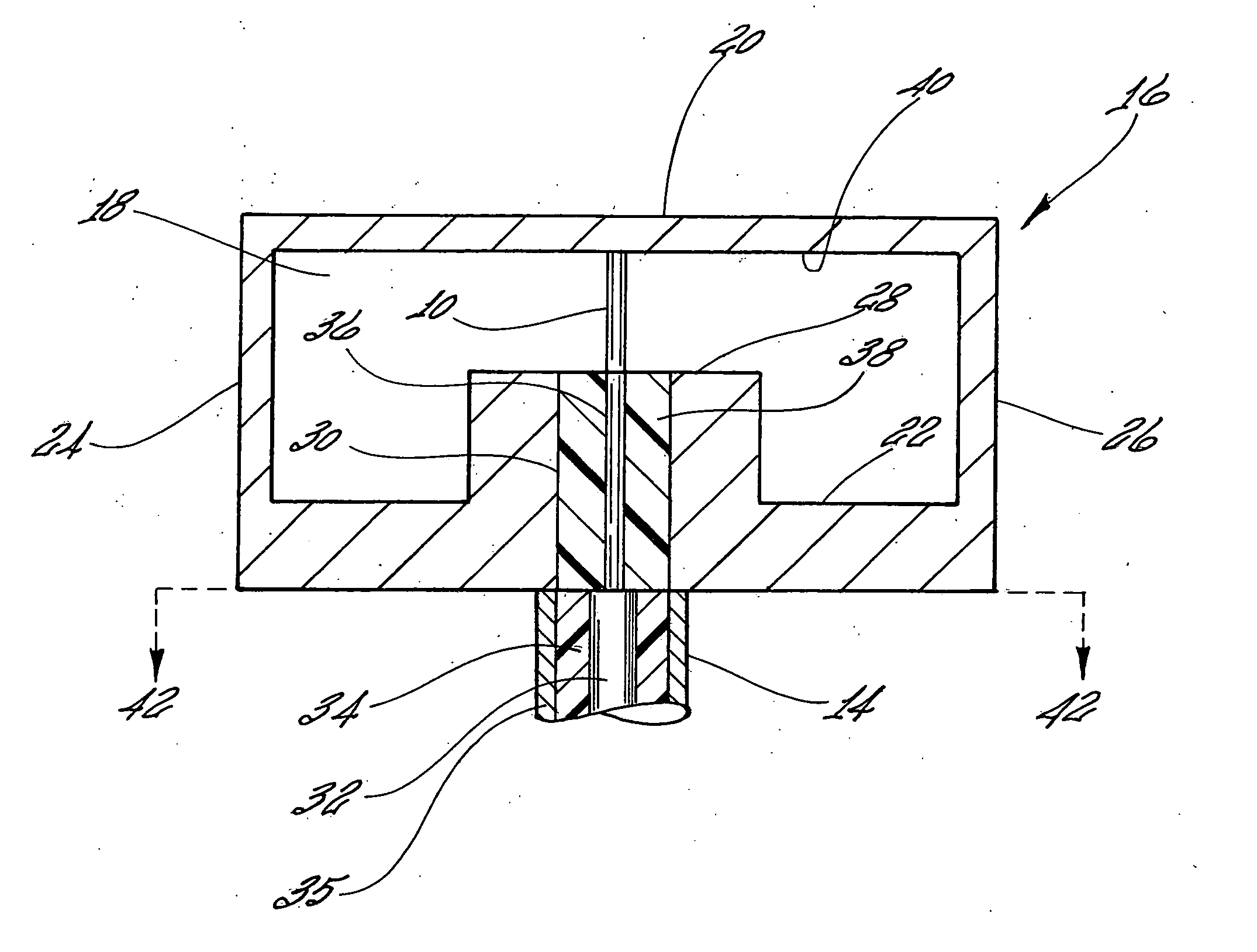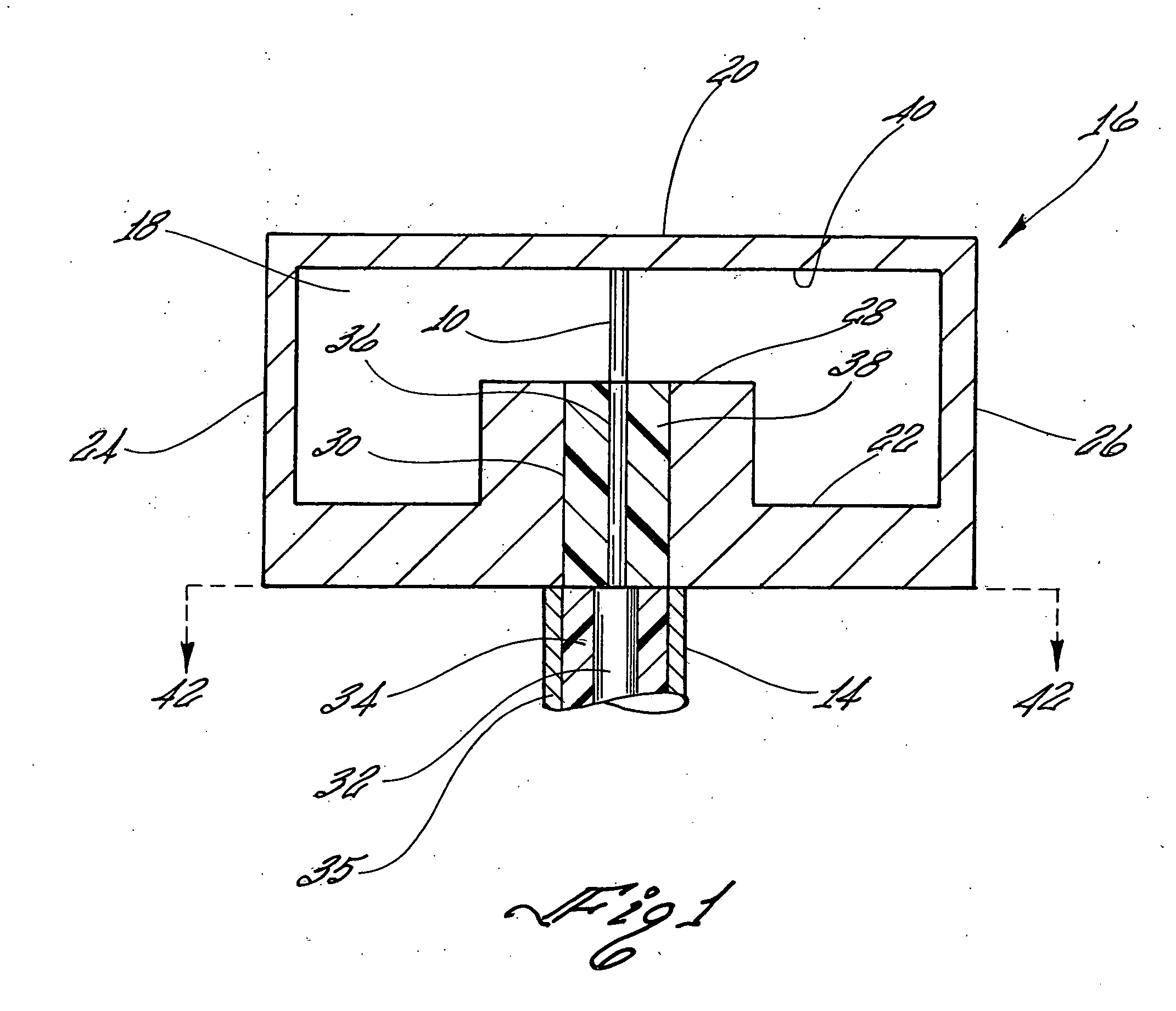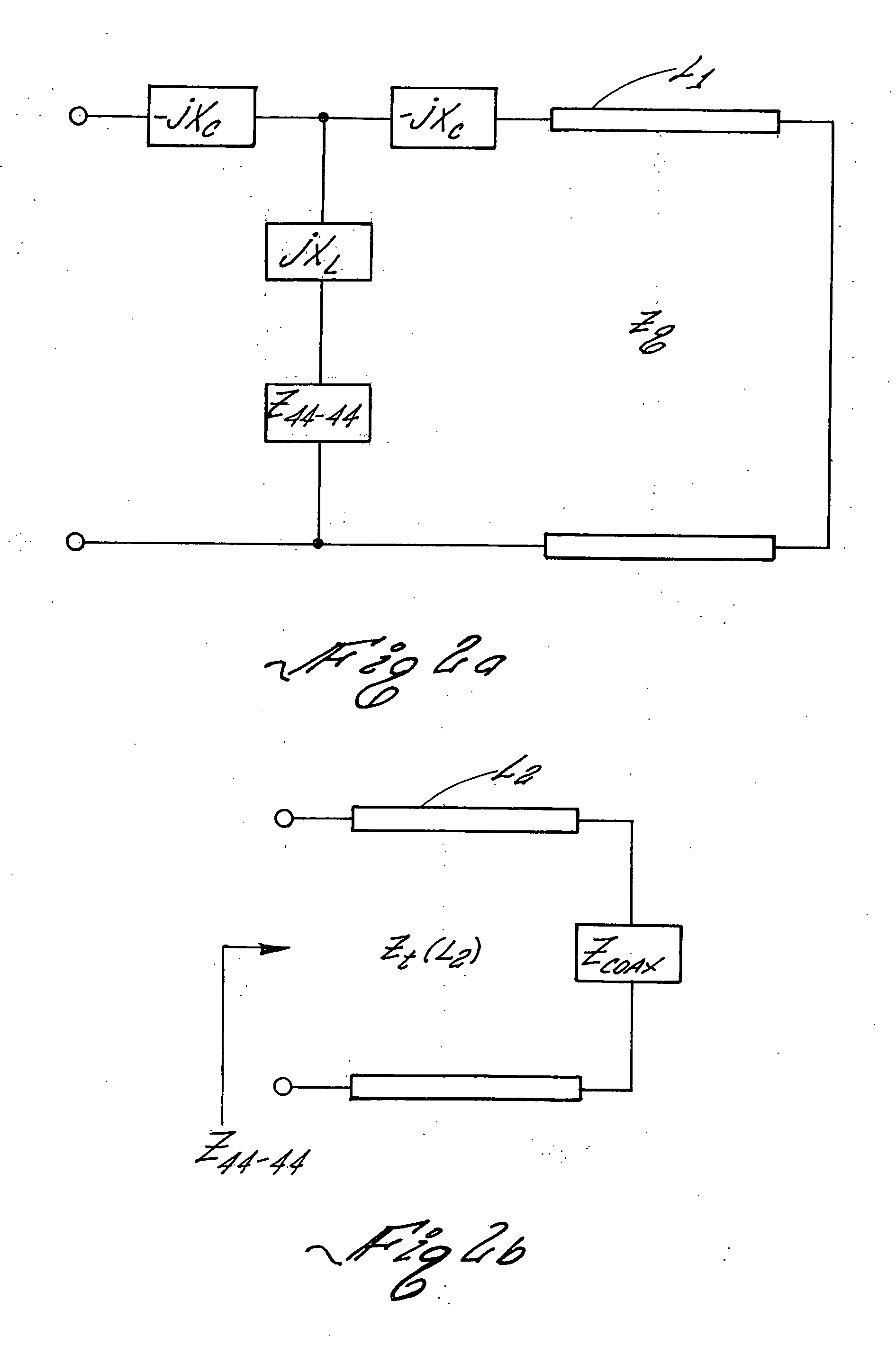Matching feed partially inside a waveguide ridge
- Summary
- Abstract
- Description
- Claims
- Application Information
AI Technical Summary
Benefits of technology
Problems solved by technology
Method used
Image
Examples
Embodiment Construction
[0014] Referring first to FIG. 1, there is shown a probe 10 which couples a coaxial transmission line 14, which is generally a connector, to a hollow metallic waveguide 16. As depicted in FIG. 1, coaxial transmission line 14 is mounted on the bottom surface of waveguide 16. The waveguide 16 may also be a dielectric filled metallic waveguide.
[0015] The waveguide 16 is formed of a hollow interior 18 with open ends to receive and deliver radio frequency signals. Waveguide 16, which has a rectangular shape, includes an upper or top wall 20, a lower or bottom wall 22 and a pair of side walls 24 and 26. A ridge 28, which is located at or near the center of the waveguide 16, runs the length of waveguide 16, and extends vertically upward from bottom or lower wall 22 of the waveguide 16. One end of the waveguide 16 is terminated with a quarterwave choke, which is a short approximately λg / 4.
[0016] A transformer 30 located within ridge 28 electrically connects the probe 10 to the coaxial tra...
PUM
 Login to view more
Login to view more Abstract
Description
Claims
Application Information
 Login to view more
Login to view more - R&D Engineer
- R&D Manager
- IP Professional
- Industry Leading Data Capabilities
- Powerful AI technology
- Patent DNA Extraction
Browse by: Latest US Patents, China's latest patents, Technical Efficacy Thesaurus, Application Domain, Technology Topic.
© 2024 PatSnap. All rights reserved.Legal|Privacy policy|Modern Slavery Act Transparency Statement|Sitemap



